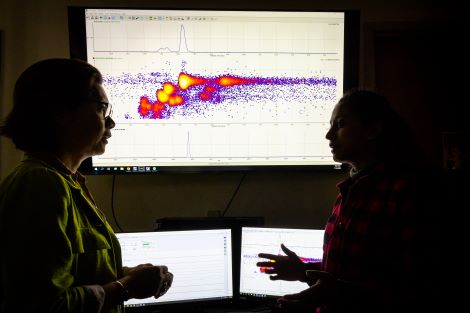Recent studies have identified a bacterial strain with remarkable potential to degrade per- and polyfluoroalkyl substances (PFAS), commonly known as “forever chemicals.” Researchers from the University at Buffalo have pinpointed Labrys portucalensis F11 (F11) as a key player in breaking down these persistent contaminants.
Understanding PFAS and Their Environmental Impact
- PFAS have been widely used since the 1950s.
- These chemicals are prevalent in products like nonstick cookware and firefighting foams.
- Their robust carbon-fluorine bonds make them highly resistant to natural degradation.
- Due to their persistence, PFAS accumulate in water and soil, posing environmental and health risks.
Discovery and Capabilities of Labrys portucalensis F11
- The F11 strain was originally isolated from contaminated soil in Portugal.
- It has demonstrated the ability to metabolize various pollutants, including pharmaceuticals.
- Until now, its effectiveness in degrading PFAS remained unexplored.
- Laboratory tests confirmed that F11 could break down more than 90% of perfluorooctane sulfonic acid (PFOS) within 100 days.
How F11 Works: Mechanism of Action
- F11 degrades PFAS by cleaving carbon-fluorine bonds.
- The bacteria not only break down PFOS but also remove fluorine from its byproducts.
- This dual mechanism enhances the efficiency of PFAS degradation.
- Elevated fluoride levels in test samples confirmed the bond cleavage process.
Experimental Testing and Results
- Researchers incubated F11 in sealed flasks where PFAS served as the sole carbon source.
- Over time, the strain showcased significant degradation abilities:
- 90% reduction of PFOS within 100 days.
- 58% degradation of 5:3 fluorotelomer carboxylic acid.
- 21% breakdown of 6:2 fluorotelomer sulfonate.
Challenges and Future Research
- F11 requires prolonged exposure to achieve effective PFAS degradation.
- Current experiments lack competing carbon sources, which may differ from real-world conditions.
- Future research aims to refine the process and introduce nutrient support to enhance F11’s efficiency in natural settings.
Potential Applications in Environmental Remediation
- Bioaugmentation strategies could incorporate F11 into contaminated sites or wastewater treatment systems.
- Implementing F11 in treatment plants may significantly improve PFAS removal.
- The research team emphasizes the need for further microbial studies to develop sustainable PFAS remediation solutions.
Labrys portucalensis F11 represents a promising tool in the fight against persistent environmental pollutants, offering hope for a cleaner future.




